Test Bank for Andersons Business Law and the Legal Environment Comprehensive Volume 22th Edition David P Twomey Download
$38.00
Title: Test Bank for Andersons Business Law and the Legal Environment Comprehensive Volume 22th Edition David P Twomey Download
Edition: 22th Edition
ISBN-10: 1133587585
ISBN-13: 978-1133587583
- Description
- Reviews (0)
Description
You will receive this product immediate after placing the order
***THIS IS NOT THE ACTUAL BOOK. YOU ARE BUYING the Test Bank in e-version of the following book***
Title: Test Bank for Andersons Business Law and the Legal Environment Comprehensive Volume 22th Edition David P Twomey Download
Edition: 22th Edition
ISBN-10: 1133587585
ISBN-13: 978-1133587583
– The test bank is what most professors use an a reference when making exams for their students, which means there’s a very high chance that you will see a very similar, if not exact the exact, question in the test!
– The file is either in pdf, doc, rtf or zipped in the package and can easily be read on PCs and Macs.
– Delivery is INSTANT. You can download the files IMMEDIATELY once payment is done.
We also faced similar difficulities when we were students, and we understand how you feel.
But now, with the Test Bank for Andersons Business Law and the Legal Environment Comprehensive Volume 22th Edition David P Twomey Download, you will be able to
* Anticipate the type of the questions that will appear in your exam.
* Reduces the hassle and stress of your student life.
* Improve your studying and also get a better grade!
* Get prepared for examination questions.
* Can save you time and help you understand the material.
This is the quality of service we are providing and we hope to be your helper.
Delivery is in the next moment. Test Bank is accurate.
If you have any questions, or would like a receive a sample chapter before your purchase, please contact us at inquiry@testbanksafe.com
Chapter 1—THE NATURE AND SOURCES OF LAW
TRUE/FALSE
1. The pattern of rules that society uses to control the conduct of individuals in their relationships is called law.
ANS: T MSC: AACSB Analytic
2. The law works to cause our society to operate in an inefficient manner.
ANS: F MSC: AACSB Analytic
3. Law is often defined as the body of principles that courts will enforce.
ANS: T MSC: AACSB Analytic
4. Jane asserts she has a legal right. Jane is really saying she has an obligation to perform or refrain from performing an act.
ANS: F MSC: AACSB Analytic
5. Rights always stand alone, without any duties.
ANS: F MSC: AACSB Analytic
6. Rights guaranteed in the United States Constitution are accompanied by duties.
ANS: T MSC: AACSB Analytic
7. Court decisions and statutes can take away rights created by the United States Constitution.
ANS: F MSC: AACSB Analytic
8. One of our most important rights is the right of privacy.
ANS: T MSC: AACSB Analytic
9. The right to be secure against unreasonable searches and seizures conducted by the police is guaranteed by state statute.
ANS: F MSC: AACSB Analytic
10. The United States Constitution provides that we have a right to be free from intrusions by others.
ANS: T MSC: AACSB Analytic
11. The private life of a nonpublic citizen is subject to public scrutiny.
ANS: F MSC: AACSB Analytic
12. One advantage of our current legal system is that the growth of technology has not created many new laws.
ANS: F MSC: AACSB Analytic
13. The right of privacy does not apply to intrusions into our privacy by means of new technology.
ANS: F MSC: AACSB Analytic
14. Several layers of law are enacted at different levels of government to provide the framework for business and personal rights and duties. At the base of this framework of laws is constitutional law.
ANS: T MSC: AACSB Analytic
15. A constitution is a body of principles that establishes the structure of a government and the relationship of that government to the people who are governed.
ANS: T MSC: AACSB Analytic
16. Statutes are the only source of law.
ANS: F MSC: AACSB Analytic
17. Within each state in the United States, only one constitution is in force.
ANS: F MSC: AACSB Analytic
18. In addition to state legislatures and the United States Congress, all cities, counties, and other governmental subdivisions have some power to adopt ordinances within their sphere of operation.
ANS: T MSC: AACSB Analytic
19. Both Congress and state legislatures enact statutory law.
ANS: T MSC: AACSB Analytic
20. Administrative regulations are a type of law.
ANS: T MSC: AACSB Analytic
21. Administrative regulations generally do not have the force of a statute.
ANS: F MSC: AACSB Analytic
22. Case law consists of the rules and regulations parties agree to as part of their contractual relationship.
ANS: F MSC: AACSB Analytic
23. Courts can create law.
ANS: T MSC: AACSB Analytic
24. When a court decides a new question or problem, the decision is called a precedent.
ANS: T MSC: AACSB Analytic
25. The group of time-honored rules that courts have used to solve similar problems for decades is called stare decisis.
ANS: T MSC: AACSB Analytic
26. Time honored rules of the community are called the common law.
ANS: T MSC: AACSB Analytic
27. Treaties made by the United States are not deemed part of the law.
ANS: F MSC: AACSB Analytic
28. Uniform State Law generally is not applicable to business.
ANS: F MSC: AACSB Analytic
29. Those uniform state laws that have been adopted by individual states were first written by Congress.
ANS: F MSC: AACSB Analytic
30. Substantive law creates rights and duties.
ANS: T MSC: AACSB Analytic
31. Civil laws define wrongs against society.
ANS: F MSC: AACSB Analytic
32. Law may be classified in terms of principles of law and principles of equity.
ANS: T MSC: AACSB Analytic
33. In the United States today, we generally have one law court and one equity court.
ANS: F MSC: AACSB Analytic
MULTIPLE CHOICE
1. Law is:
a. a body of religious principles held by all members of society.
b. a body of principles that society establishes to keep things running smoothly.
c. always the result of case-law decisions.
d. derived solely from the United States Constitution.
ANS: B MSC: AACSB Analytic
2. Law consists of:
a. principles that govern conduct.
b. mere guidelines.
c. arbitrary rules.
d. none of the above.
ANS: A TOP: MSC: AACSB Analytic
3. The law could best be described as:
a. only statutory in nature.
b. only the creation of our courts.
c. a collection of rights.
d. none of the above.
ANS: C MSC: AACSB Analytic
4. Our rights flow from:
a. the Constitution.
b. federal statutes.
c. city ordinances.
d. all of the above.
ANS: D MSC: AACSB Analytic
5. A right can exist:
a. by itself.
b. only if created by a court.
c. only if there is a corresponding duty.
d. only under local law.
ANS: C MSC: AACSB Analytic
6. A right is defined as:
a. an obligation of law imposed to perform an act.
b. a legal capacity to require another party to perform an action.
c. any written promise.
d. none of the above.
ANS: B MSC: AACSB Analytic
7. Individual rights guaranteed in the United States Constitution:
a. have no accompanying duties.
b. apply only to a small number of individuals.
c. are subject to state legislative laws.
d. generally have accompanying duties.
ANS: D MSC: AACSB Analytic
8. Rights guaranteed in the United States Constitution:
a. cannot be taken away by statutes or court decisions.
b. can be taken away by statutes.
c. can be taken away by court decisions.
d. can be taken away by local ordinances.
ANS: A MSC: AACSB Analytic
9. The right of privacy consists of:
a. the right to be secure against unreasonable searches by the government only.
b. the right to protection against intrusions by others only.
c. both the right to be secure against unreasonable searches by the government and the right to protection against intrusions by others.
d. none of the above.
ANS: C MSC: AACSB Analytic
10. Sheriff Jane desires to search your home. What law requires that the sheriff obtain a search warrant?
a. the Fourth Amendment of the United States Constitution
b. the Equal Protection Clause
c. state statute
d. local uniform police ordinances
ANS: A MSC: AACSB Analytic
11. The right to privacy applies to protect you from unreasonable searches:
a. to you personally.
b. to your home.
c. to your business.
d. all of the above.
ANS: D MSC: AACSB Analytic
12. Your private life is protected from intrusions by other people by:
a. the Fourth Amendment of the United States Constitution.
b. the Equal Protection Clause.
c. court decisions of the United States Supreme Court.
d. local ordinance.
ANS: C MSC: AACSB Analytic
13. Interpretations of aspects of the right to privacy are often found in:
a. statutes.
b. customs.
c. societal guidelines.
d. none of the above.
ANS: A MSC: AACSB Analytic
14. Technology:
a. has not created situations that require the application of new rules of law.
b. has indeed created situations that require the application of new rules of law.
c. has done away with the right of privacy.
d. has made it easier to identify when one’s privacy has been invaded.
ANS: B MSC: AACSB Analytic
15. Several layers of law are enacted at different levels of government to provide the framework for business and personal rights and duties. At the base of this framework of laws is:
a. statutory law.
b. case law.
c. constitutional law.
d. all of the above.
ANS: C MSC: AACSB Analytic
16. Sources of American law include:
a. state constitutions.
b. statutes enacted by state legislatures.
c. court decisions.
d. all of the above.
ANS: D MSC: AACSB Analytic
17. ____ is a body of principles that establishes the structure of a government and the relationship of that government to the people.
a. A constitution
b. Statutory law
c. Stare decisis
d. The common law
ANS: A MSC: AACSB Analytic
18. Statutory law is created by:
a. Congress.
b. state legislatures.
c. local governments.
d. all of the above.
ANS: D MSC: AACSB Analytic
19. Administrative regulations:
a. are essentially industry advisories.
b. are case-law precedents.
c. generally have the force of statute.
d. are Constitutional principles.
ANS: C MSC: AACSB Analytic
20. Legal principles expressed for the first time in court decisions are called:
a. statutory law.
b. stare decisis.
c. common law.
d. precedents.
ANS: D MSC: AACSB Analytic
21. Statutes which are drafted from Uniform State Laws are often used to regulate:
a. business.
b. foreign countries.
c. criminal behavior.
d. none of the above.
ANS: A MSC: AACSB Analytic
22. Uniform State Laws are used as a basis for laws by which of the following entities?
a. Congress
b. international trade associations
c. state legislatures
d. local governmental entities
ANS: C MSC: AACSB Analytic
23. Substantive law:
a. specifies the steps to follow to enforce legal rights.
b. concerns equitable relief only.
c. creates, defines, and regulates rights and liabilities.
d. draws solely on English legal principles.
ANS: C MSC: AACSB Analytic
24. Criminal laws:
a. define wrongs against society.
b. define the rights of one person against another.
c. carry damage remedies against the wronged individual.
d. all of the above.
ANS: A MSC: AACSB Analytic
25. ______ is a body of law that provides justice when the law does not offer an adequate remedy.
a. Ethics
b. Regulations
c. Equity
d. None of the above.
ANS: C MSC: AACSB Analytic
CASE
1. Jacob just won the state lottery. Discuss his right to privacy.
ANS:
Within the context of the Fourth Amendment, Jacob continues to be protected to the same extent he was prior to winning. Regarding his right to be protected from intrusions by others, however, he most likely will have to give up some privacy rights because of his good fortune; that is, although he remains a private citizen, he will not have quite the same degree of privacy protection in this arena as he had before winning the lottery.
MSC: AACSB Reflective Thinking | AACSB Analytic
2. A new state law mandates that all employers must prohibit smoking on employer premises. The law further provides that any employer who allows an employee or a client/ customer to smoke on its premises is subject to a court order requiring the employer to enforce the law. Describe this statute in terms of all possible classification methods.
ANS:
The law is substantive because it defines rights and liabilities of business owners. The law is also equitable, based on the remedy of specific performance, since it subjects the employer to a court order requiring the employer to actually do something; i.e., forbid smoking on its premises.
MSC: AACSB Reflective Thinking | AACSB Analytic
Be the first to review “Test Bank for Andersons Business Law and the Legal Environment Comprehensive Volume 22th Edition David P Twomey Download”
You must be logged in to post a review.

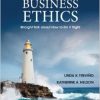
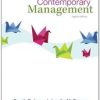

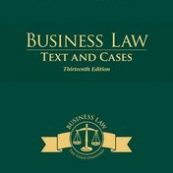
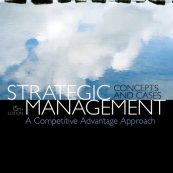
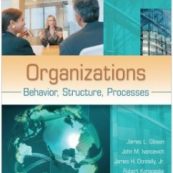
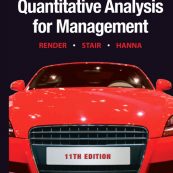
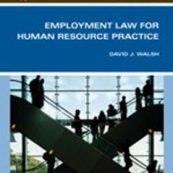
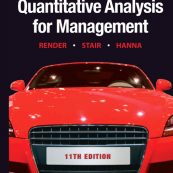
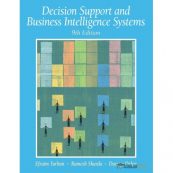
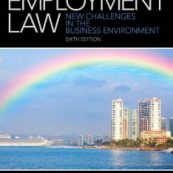
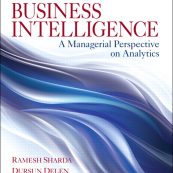
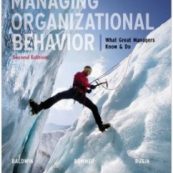
Reviews
There are no reviews yet.